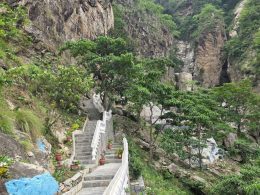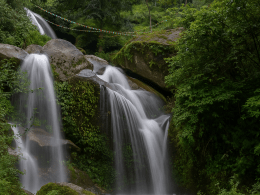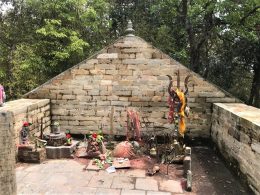Dhankuta, a beautiful district in eastern Nepal, is known for more than just farming. It is also famous for its colorful and creative fruit and vegetable statues. These statues are not just for fun—they help tell the story of Dhankuta’s farming history and future. They attract visitors and support the local economy. This article explores why the fruit and vegetable statues in Dhankuta are so special.
From Oranges to Avocados: A Changing Farming Story in Dhankuta
Long ago, Dhankuta was famous for its orange farms. The district sold oranges to many places, including the Terai region and parts of India. However, because of climate change and other problems, orange farming started to decline.
To find a solution, local farmers and experts introduced avocado farming over 40 years ago. It started small but grew big because avocados grow well in Dhankuta’s soil and climate. In 2018, Dhankuta was named the “Avocado Capital” of Nepal.
Why Build Fruit and Vegetable Statues in Dhankuta?
As the district’s farming changed, Dhankuta also wanted to change how it told its story. That’s when the idea of fruit and vegetable statues in Dhankuta was born. These statues honor local crops and attract tourists. They also make people feel proud of their district.
The statues are fun, creative, and easy to find. Each one shows what makes that area special in terms of agriculture.
Key Fruit and Vegetable Statues in Dhankuta
Let’s take a look at some of the most popular statues across the district:
Avocado Statue – Avocado Park

Located at Avocado Park, this large avocado statue is a symbol of Dhankuta’s newest farming success. The park is green and peaceful, making it a great place to relax and learn about avocado farming.
Cauliflower Statue – Sindhuwa Bazar

Sindhuwa Bazar is known for growing many vegetables. The cauliflower statue there celebrates the area’s strong farming roots and exports.
Kagati (Lemon) Statue – Kagatay

In the village of Kagatay(कागते), a lemon (kagati) statue highlights local citrus farming and adds charm to the area.
How These Statues Help Dhankuta’s Economy
The fruit and vegetable statues in Dhankuta are not just art—they help the economy too. Here’s how:
1. Boosting Agro-Tourism
Many people visit Dhankuta to see these creative statues and learn about farming. This is called agro-tourism. It helps local businesses, such as tea shops, hotels, and tour guides.
2. Creating Local Jobs
With more visitors, there are more chances for people to earn money. Some sell local food, others offer homestays, and some guide tourists. This helps families earn extra income.
3. Promoting Local Products
The statues help promote avocados, vegetables, and fruits grown in Dhankuta. When people visit, they often buy these items to take home or sell in nearby cities.
4. Building Community Pride
The statues help people feel proud of where they live. They show that Dhankuta values its farming roots and is ready to grow in new ways.
Challenges and What’s Next
Even though the statues are helpful, there is still work to do. Dhankuta needs more promotion so that more tourists know about these fun landmarks. Better roads, signs, and online marketing can help bring more people to the district.
Also, community involvement is key. Local people need to work together to keep the parks clean and guide visitors well.
A Creative Way to Grow
The fruit and vegetable statues in Dhankuta are more than just decorations. They celebrate farming, bring tourists, support the local economy, and help people feel proud of their land. With more support and better promotion, these colorful landmarks can make Dhankuta even more popular and prosperous.
See Nepal in every scroll: Follow us on Facebook, Instagram, and TikTok for stories that bring the country to life.










